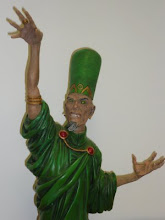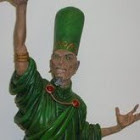 A very gripping and enjoyable crime thriller that has a satisfyingly bitter undertow. Portia McTeague is a forensic psychologist who is taking a self imposed break from criminal work and running a private practice in Charlotte, North Carolina. The very violent death of a local semi-celebrity and psychic healer catches her attention but does not engage her. Portia is too involved with her own personal affairs, including a relationship with a private investigator and raising her adopted daughter to be distracted. A new patient, who is pursuing an agenda of his own and a worrying call into the Help Line where Portia volunteers start the process that draws Portia into the investigation and down a route that leads to a savage conclusion.
A very gripping and enjoyable crime thriller that has a satisfyingly bitter undertow. Portia McTeague is a forensic psychologist who is taking a self imposed break from criminal work and running a private practice in Charlotte, North Carolina. The very violent death of a local semi-celebrity and psychic healer catches her attention but does not engage her. Portia is too involved with her own personal affairs, including a relationship with a private investigator and raising her adopted daughter to be distracted. A new patient, who is pursuing an agenda of his own and a worrying call into the Help Line where Portia volunteers start the process that draws Portia into the investigation and down a route that leads to a savage conclusion.Faye Sultan and Teresa Kenny take an unusual and interesting approach to a well settled crime genre story, a forensic psychologist who is involved in the case of a serial killer. The choose to come at the crimes from an angle rather than head on, the narrative has really major lines with the killer having what is an essentially walk on part. The secondary major thread is the the story arc of an ambitious journalist and his equally ambitious editor-in-chief and their mutual desire to use each other as comprehensively as possible. This duo are a striking study in selfishness and the hunger for power, the similarities that draw them together that also ensure that they could nor remain united. The editor-in-chief is an impressive portrait of a ambitious woman who is determined to achieve her goals and has no concerns about how to do so. What is refreshing is that she is allowed to be herself without any punishment for daring to be an ambitious, selfish human. She is not very nice, she is intensely credible and burns with a fire that the reader can feel. The journalist is equally selfish and determined on his goals, he comes off as weaker than the editor partly because of their relative positions and partly because there is simply less substance in his character.
Portia McTeague follows a very unusual story arc as she steadily moves into the orbit of the killer and realises that she has done so. Portia is bored with the private practice and would like to return to criminal work, while at the same time not wishing to have the pubic pressure that comes with it. She chooses a low profile way to engage with the case and finds herself pulled into it. It is this process that is done very differently, Portia McTeague slowly and steadily burns all her personal bridges as the pressure of the case meshes nicely with her explosive insecurities. Portia is an astoundingly angry charachter, anrgy with her lover, her friends and her therapist as they all stubbornly refuse to see that she is perfectly correct in every way all the time. Her flight from vulnerability is not manipulated by the killer, it lies entirely within Portia's own hands. The collision when it comes is brutal because Portia has arrived at the situation as a free agent, the sheer force of the tragic inevitability of her self destructive actions is all the greater. The fact that Portia is competent, brave and in spite of her refusing sympathy from those around her, sympathetic, makes this a very engaging journey for the reader.
This is a smart, unexpected crime story that uses clever plot mechanics and a superb cast to great effect, a pleasure.




